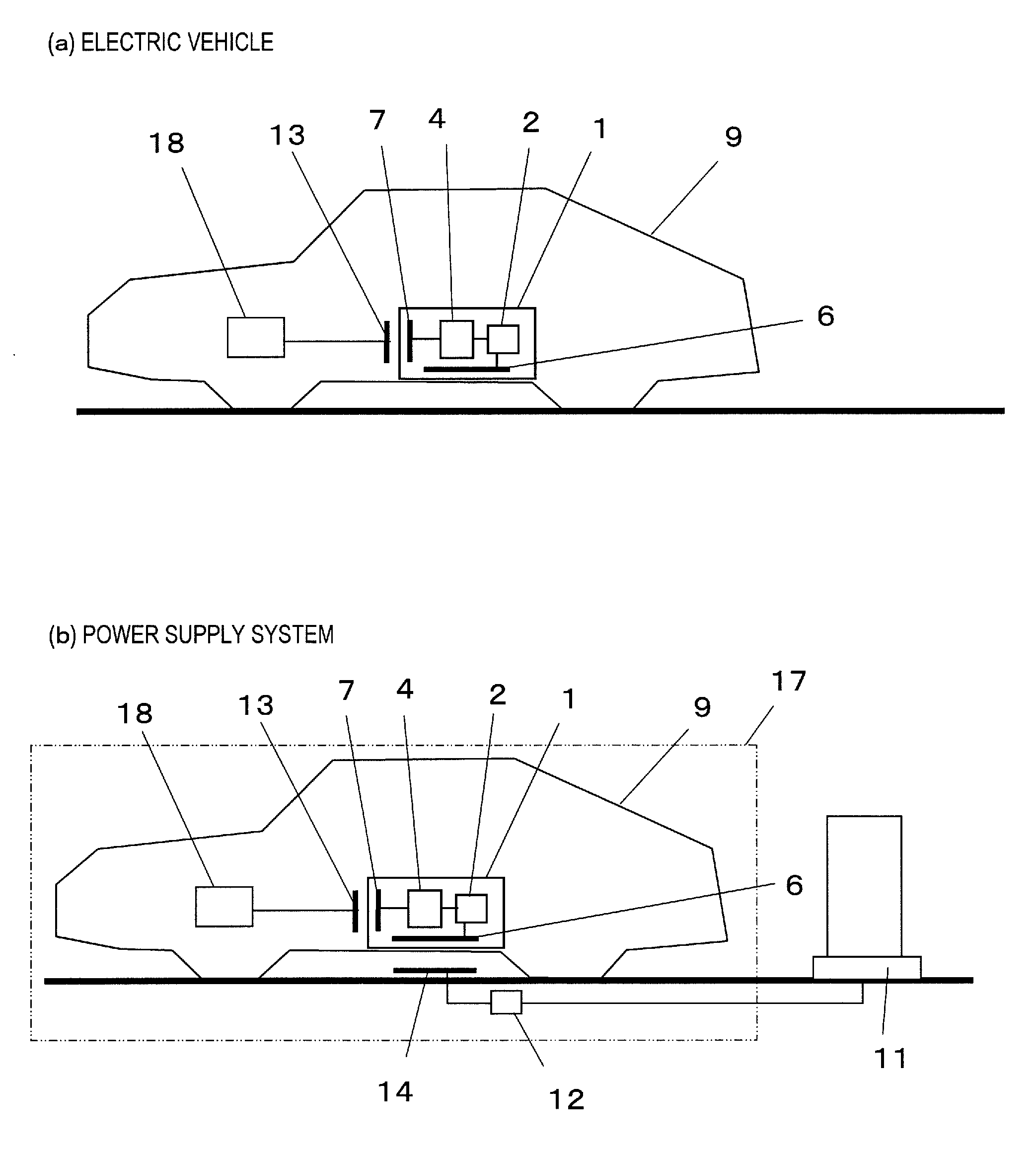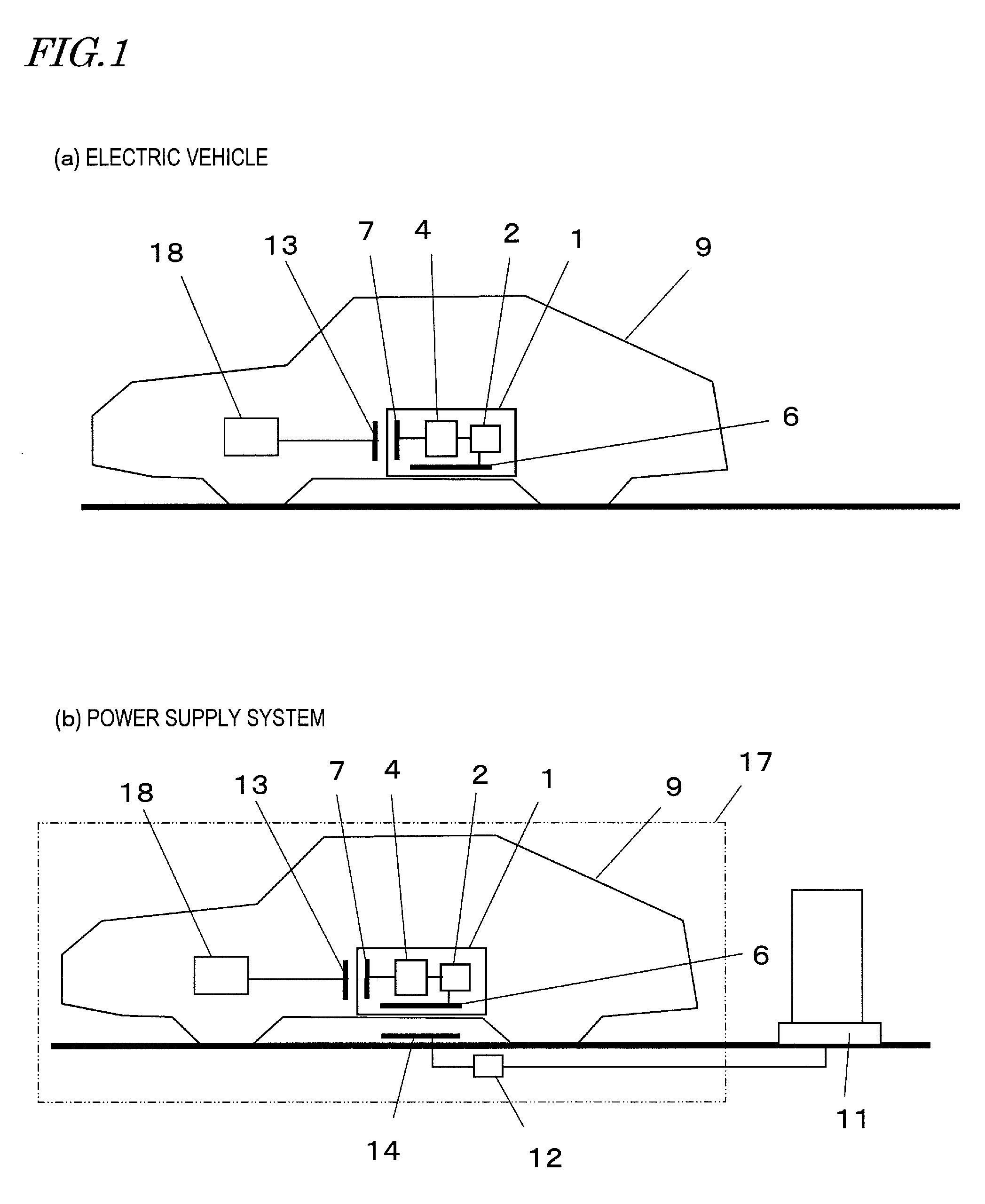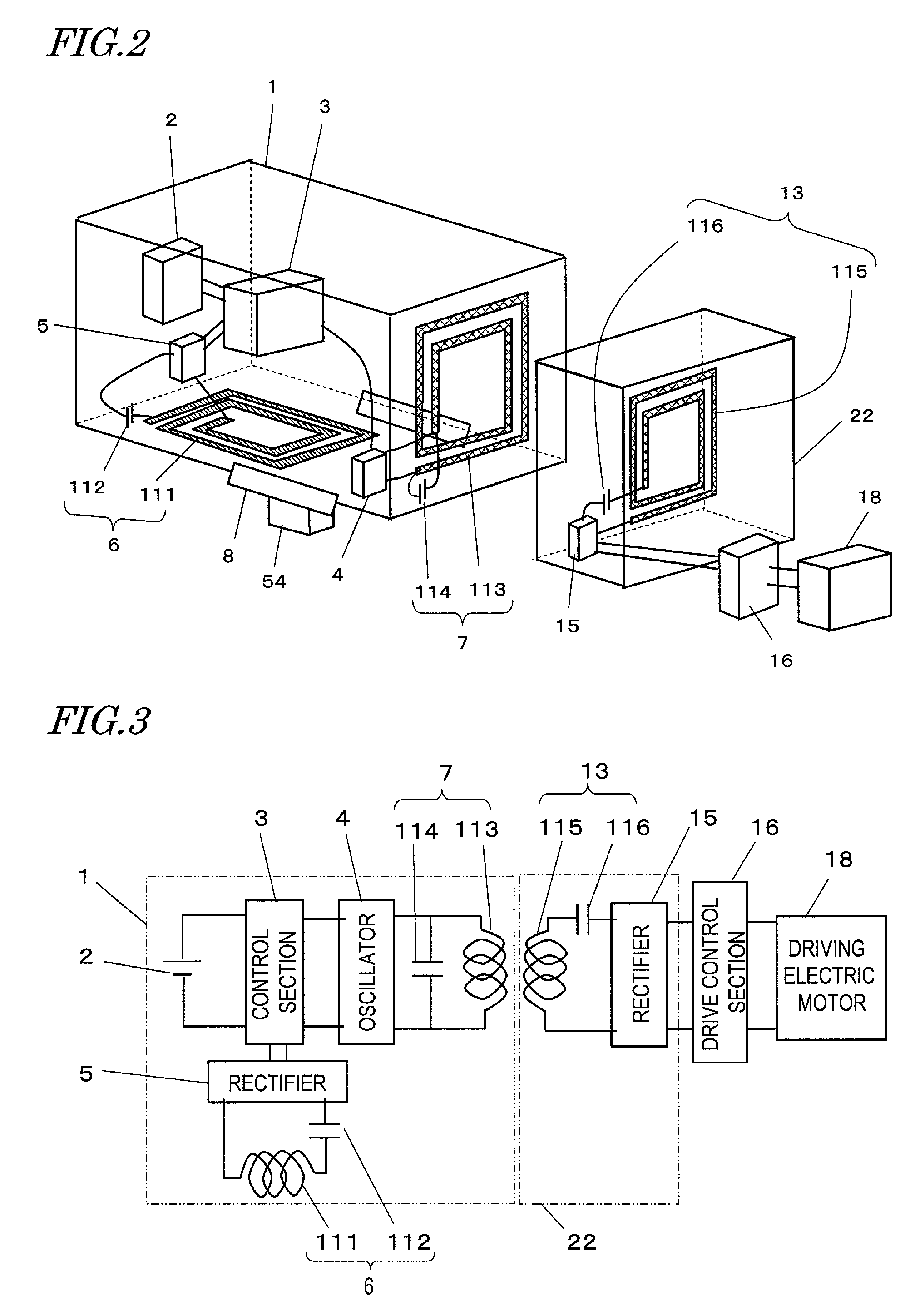Electric machine and power supply system having battery pack
a technology of power supply system and electric machine, which is applied in the direction of batteries, hybrid vehicles, sustainable manufacturing/processing, etc., can solve the problems of inability to realize efficient transfer, and large force required for connecter fitting operation, so as to achieve safe and easy battery replacement and efficient electric power transfer
- Summary
- Abstract
- Description
- Claims
- Application Information
AI Technical Summary
Benefits of technology
Problems solved by technology
Method used
Image
Examples
embodiment 1
[0033]First, referring to FIG. 1, the first embodiment of the present invention will be described.
[0034]The present embodiment is directed to an electric vehicle, as an example of an electric machine having a battery pack of the present invention. FIG. 1(a) shows a configuration of the electric vehicle of the present embodiment, and FIG. 1(b) shows a configuration of a power supply system used in the electric vehicle. Note that the configuration of the electric vehicle and the power supply system shown in FIG. 1 is merely one example of possible configurations of the present embodiment, and the configuration of the present embodiment is not limited to that shown in FIG. 1.
[0035]An electric vehicle 9 shown in FIG. 1 runs using a driving electric motor 18 as the power source. The driving electric motor 18 serves as the power source of the electric vehicle 9 by receiving the electric power from a secondary battery 2 installed in the electric vehicle 9. In a preferred example, the secon...
embodiment 2
[0081]Referring now to FIG. 9, a second embodiment of the present invention will be described.
[0082]The electric vehicle 9 shown in FIG. 9 includes a seat 134 and a plurality of wheels so that a passenger 132 can be seated as shown in the figure. The battery pack holding section 54 holds the battery pack 1 so that the primary surface of the first antenna 6 is placed parallel to the ground, and the primary surface of the second antenna 7 is placed vertical to the ground. The primary surface of the fourth antenna 14 is placed parallel to the primary surface of the first antenna 6, and the primary surface of the third antenna 13 is placed parallel to the primary surface of the second antenna 7. Note that only one wheel is illustrated in FIG. 9, but the electric vehicle 9 of the present embodiment has four wheels. These wheels are driven by the driving electric motor 18.
[0083]The battery pack 1 is placed so that the distance from the seat 134 to the second antenna 7 is longer than the d...
embodiment 3
[0088]Referring now to FIGS. 10 and 11, a third embodiment of the present invention will be described.
[0089]FIG. 10 shows a basic configuration of an electric vehicle of the present embodiment. FIG. 11 shows an equivalent circuit diagram of the electric vehicle of the present embodiment. A main difference between the present embodiment and Embodiment 1 is that the electric vehicle of the present embodiment includes a second secondary battery 52 that is different from the secondary battery 2 in the battery pack 1.
[0090]As shown in FIG. 10, the electric vehicle includes the second secondary battery 52 which is a driving battery that can be charged / discharged, and a charge-discharge control section 51 which is a circuit for controlling the charging / discharging of the second secondary battery 52. The capacity of the secondary battery 2 is set so that the battery pack 1 is light enough to be carried around by a person, and a carry handle 53 is provided.
[0091]With the electric vehicle of ...
PUM
 Login to View More
Login to View More Abstract
Description
Claims
Application Information
 Login to View More
Login to View More - R&D
- Intellectual Property
- Life Sciences
- Materials
- Tech Scout
- Unparalleled Data Quality
- Higher Quality Content
- 60% Fewer Hallucinations
Browse by: Latest US Patents, China's latest patents, Technical Efficacy Thesaurus, Application Domain, Technology Topic, Popular Technical Reports.
© 2025 PatSnap. All rights reserved.Legal|Privacy policy|Modern Slavery Act Transparency Statement|Sitemap|About US| Contact US: help@patsnap.com



